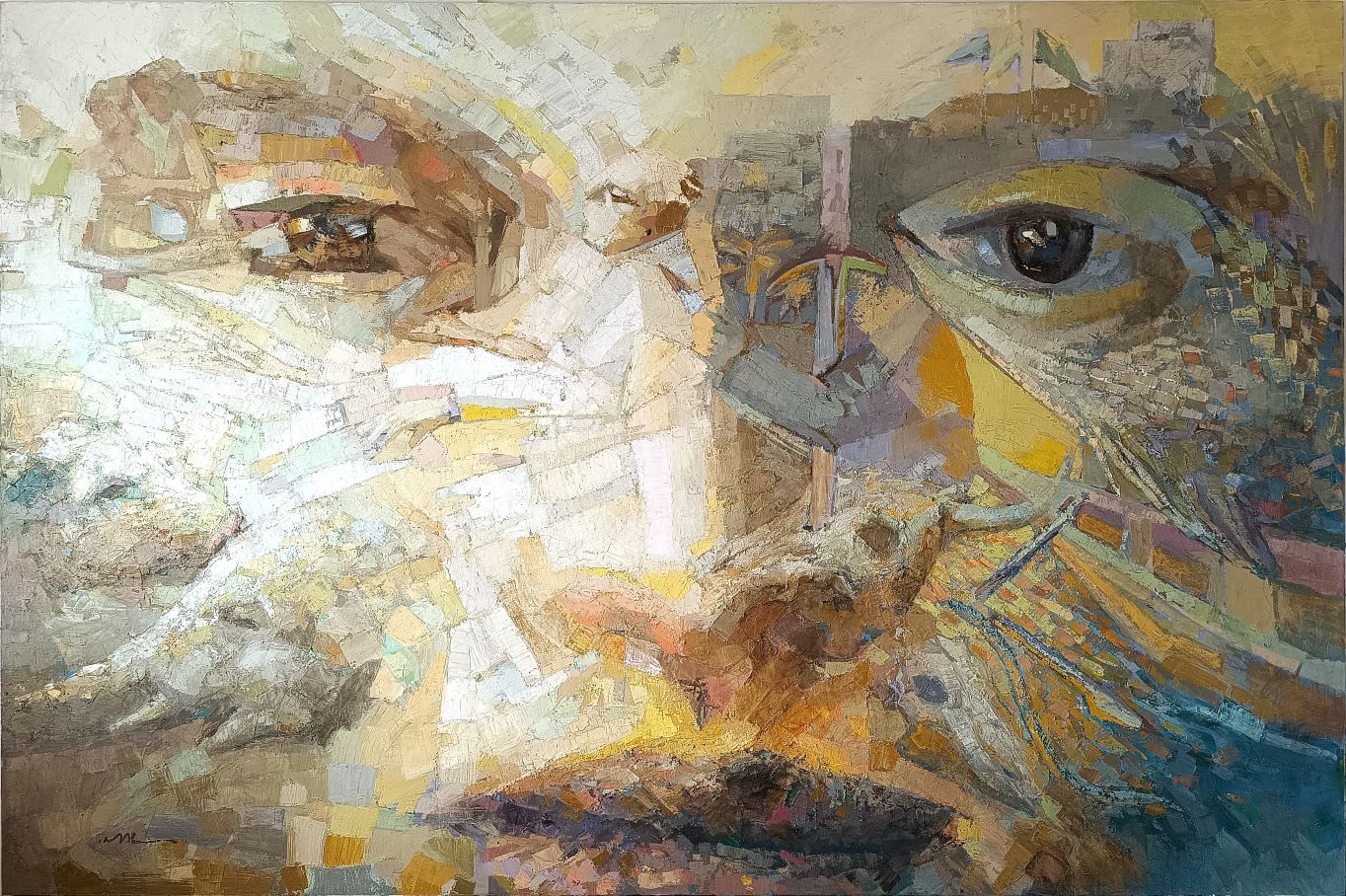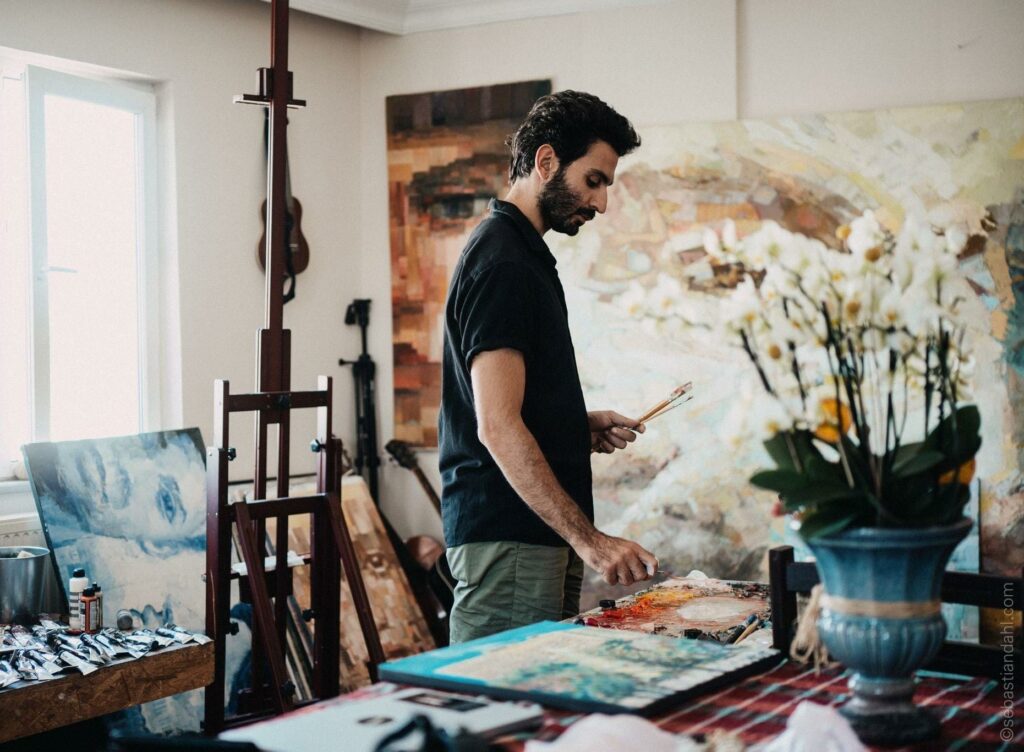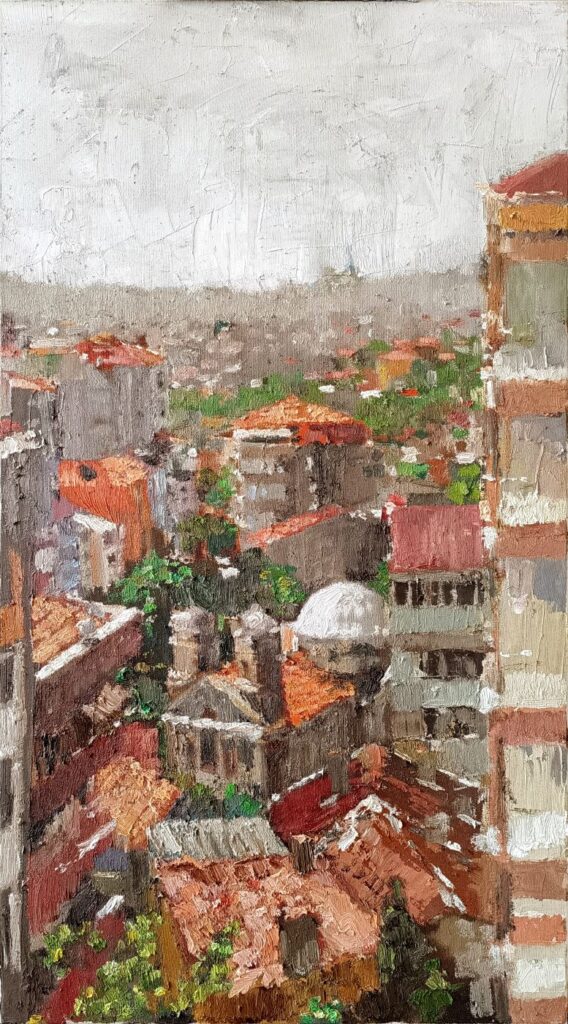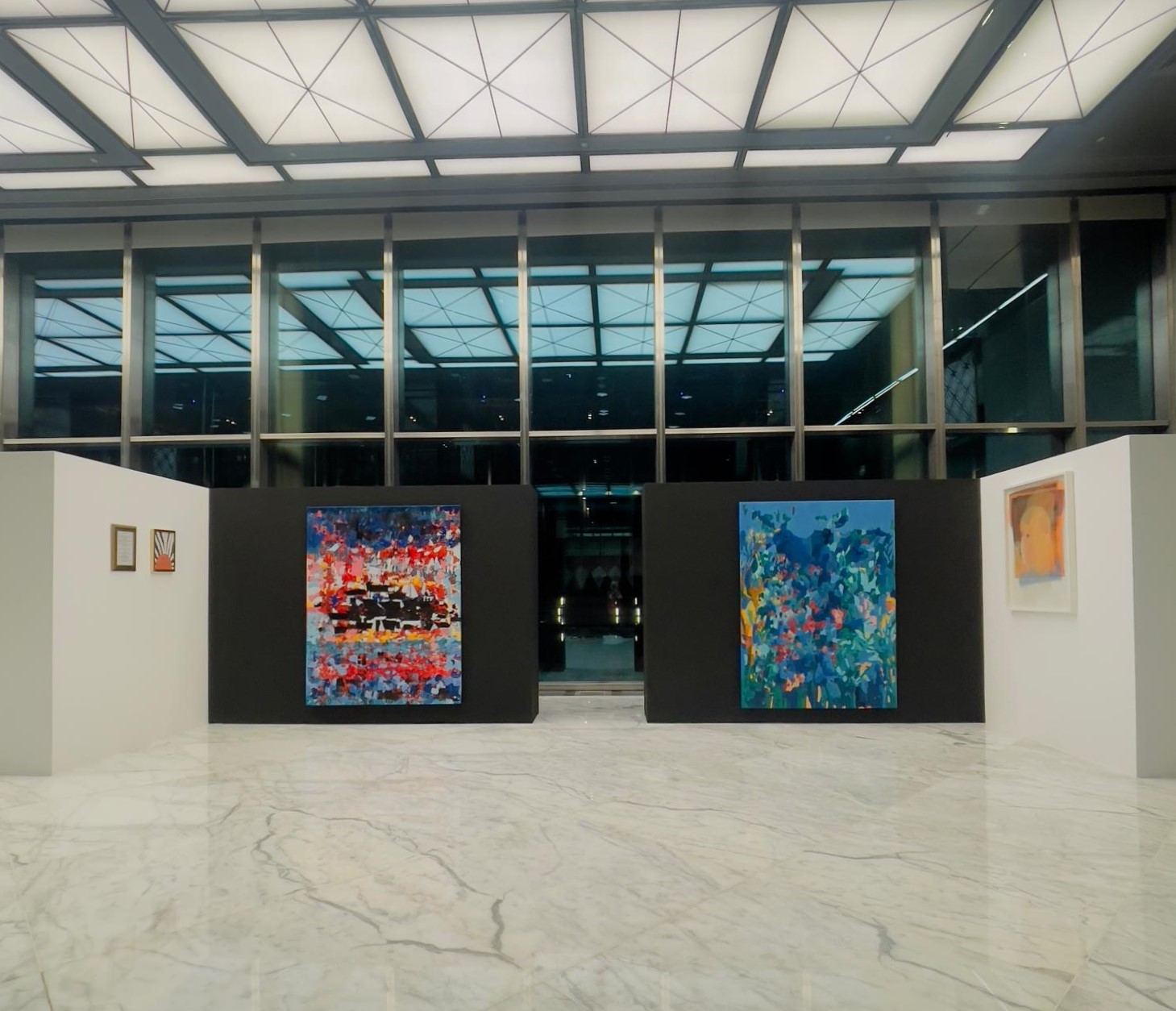
Conceptualizing Imad Habbab’s Art: A Journey into Metaphors
Imad Habbab, a Syrian artist based in İstanbul, coins the term ‘Constructive Metaphorism’. Through his art, he follows his definition of this term through, and journeys into the world of metaphors.
Imad Habbab is a name synonymous with ‘Constructive Metaphorism’; a term he coined that sums up his artistic manifesto. A regional traveler in the Middle East, this Syrian artist moved from Damascus to Beirut, and then from Beirut to İstanbul, where he currently resides. His work is often inspired by the cities he lives in; indeed, he marvels about how much do ‘People make their City’. In this article, I catch up with Imad and his current state of mind, as he reflects on the masterpieces he created during and since the pandemic.

Imad Habbab in his studio (photo copyright Sebastian Dahl)

The Impressionist palette of Imad Habbab’s art (photo courtesy of the artist)
Imad’s palette is an Impressionist one, and yet his work borders, in my opinion, on the world of Symbolism. Uniquely, he works on ‘hiding’ symbolic elements in his paintings, bordering on the creation of optical illusions. I previously reviewed Imad’s January 2024 exhibition ‘Identity Traces’ at Urbanist Art Gallery in Dubai; you can read the article here. I remarked how “Different imagery appear as one observes from different vantage points. The optical illusion of merging faces or archetypes with urban landscapes is one of the characteristics of his works. It is playful, yet subtle, and allows a sense of nostalgia or longing to the cities and places depicted.”

Imad Habbab’s photography as part of his research (photo courtesy of the artist)
More recently, I interviewed Imad Habbab to delve deeper into his practice. As it turns out, his depictions of urban landscapes trace his own travels, as he migrated from Damascus, first to Beirut and then to İstanbul. In fact, it was in Beirut where he observed that “people are so much made by their city.”
“This binary between the human and the city making one another, is present all throughout history, and it occupied my mind,” he shares with me. “It became compelling in my mind as a metaphor.”
“This binary between the human and the city making one another, is present all throughout history, and it occupied my mind. It became compelling in my mind as a metaphor.”
Imad Habbab, artist
Hence, the pull and allure of İstanbul. After a brief 24 hours in the city straddling two continents, Imad became convinced that “this kind of geography has a lot of inspiration for me.” He visualized the imagery of a city containing light. He reflected on all of the stories linking the city to the water body. And more importantly, he felt a sense of joy and possibility. “I felt that [this city] could take my concept further.”

‘Love Life Serenity’ (2015) 160×120, oil on canvas by Imad Habbab (photo courtesy of the artist)
Finally moving to İstanbul in 2015, Imad’s oeuvre developed and evolved. His first mission was to learn about the history of the city, and he decided to do so from different sources. Most importantly, he wanted to know how the buildings’ stories evolved in people’s minds; specifically, the buildings that changed function over time. The learning process enriched his work and practice, and he often took pictures for inspiration as he spent time exploring the city, at his own pace.

‘Cycle’ (2020) 158×137, oil on canvas by Imad Habbab (photo courtesy of the artist)
Then came the pandemic. Being stripped from his freedom and his walking expeditions, Imad decided to spend the time working on a piece with as slow a tempo as possible. From his project, a painting called ‘Cycle’ (2020) was born; a project that took about 8 months. In this painting, he depicted different iconic structures of İstanbul; including the Haydarpaşa Ferry Station, Kız Kulesi, Beylerbeyi Sarayı, the Bosphorus Bridge, Topkapi Sarayı, the Hagia Sophia Church, Fener Rum Patriarchal Cathedral and the Galata Tower. He also depicted the four seasons at the four corners of the painting. When an observer stands at a distance, and looks at the urban landscape depicted in the painting, a face appears.
Thus, ‘Constructive Metaphorism’ was born. The artist and I picked apart the wording of the term. Conclusively, ‘constructive’ refers to the process of constructing different layers. ‘Metaphorism’ is used because the artist is building the painting, and the painting has hidden metaphors. The artist’s methodology allows for the deep recesses of human experience to show up, and be on display. These are expressed mostly in his work ‘Cycle’ (2020), but also on a more recent work titled ‘Siddhartha’ (2023).

‘Siddhartha’ (2023) 200×300, oil on canvas by Imad Habbab (photo courtesy of the artist)
Imad became interested in creating a painting from a work of literature. He read Siddhartha (1922) by Herman Hesse, and became interested in the character from the author’s perspective, the former whom had lived during the time of the Buddha. One of the experiences that the character goes through is the state of Nirvana, described in great detail by Hesse. He decided to create an eponymous painting, dedicated to this character, drawing on imagery directly from the text.
Stephanie Ann Huff describes the painting and its allusions in great detail with her recent article ‘Imad Habbab: Exploring Constructive Metaphorism’ (2024).
“In the novel Siddhartha, the author starts the final scene with Govinda, Siddhartha’s lifelong companion, having a vision of Siddhartha’s enlightenment. As Siddhartha invites Govinda to kiss his forehead, he begins to see a cascade of images unfold before him. Among them, he envisions a fish in a stream invoking a contemplation of the interconnectedness of all living things. He contemplates the carp fish with weary eyes, symbolizing the struggles of life. Habbab, similarly, places the fish as the right eye moving into the nose of the portrait.” Stephanie Ann Huff
Read the entire description of the painting in the article here.

Details of ‘Siddhartha’ (2023) showing hidden imagery such as figures (photo courtesy of the artist)

Details of ‘Siddhartha’ (2023) showing hidden imagery such as animals (photo courtesy of the artist)
The painting is quite large, around 2×3 meters in size. It is an ambitious project that took 8 months to complete, with 3 months dedicated just to preparations and sketches. In the artist’s own words, the main challenge was the depiction of different levels of meaning within one artwork. Through Constructive Metaphorism, he was able to depict the depth of human experiences.
The artist states: “Spiritual attainments do not come between a day and a night, they don’t come all of a sudden; they are a product of a long journey of experience.” Indeed, so is this painting. The artist hid the allusions in the painting; including imagery of animals and figures, like lovers, murderer and victim, fish, a boar, an elephant, a crocodile, a bull, etc. He did so with his color palette, making the elements “less easy to appear.” The product is a masterpiece; a painting that takes hours to mull over and unravel with one’s eyes.
The artist shares with me that he would be happy to work on further literature-based artworks, as it was such a joyful process for him. I have no doubt that, whatever the artist sets his mind to next, it will be a project of a deep, playful and masterful procedure.
You may also like
‘Spring in January’ at Urbanist Art Gallery in Dubai blooms with Fine Art
Urbanist Art Gallery launches the spring season with a refreshing collection of fine art paintings a
“La Belleza” exhibition by MIA Art Collection brings Poetry to the fore of the Arts
MIA Art Collection’s latest exhibition “La Belleza” in DIFC Dubai celebrates and combines both
Women Art Photographers Spotlight Injustice in the Upcoming Exhibition by MIA Art Collection
MIA Art Collection launches an ambitious exhibition 'What A Wonderful World' on 22 November as part








